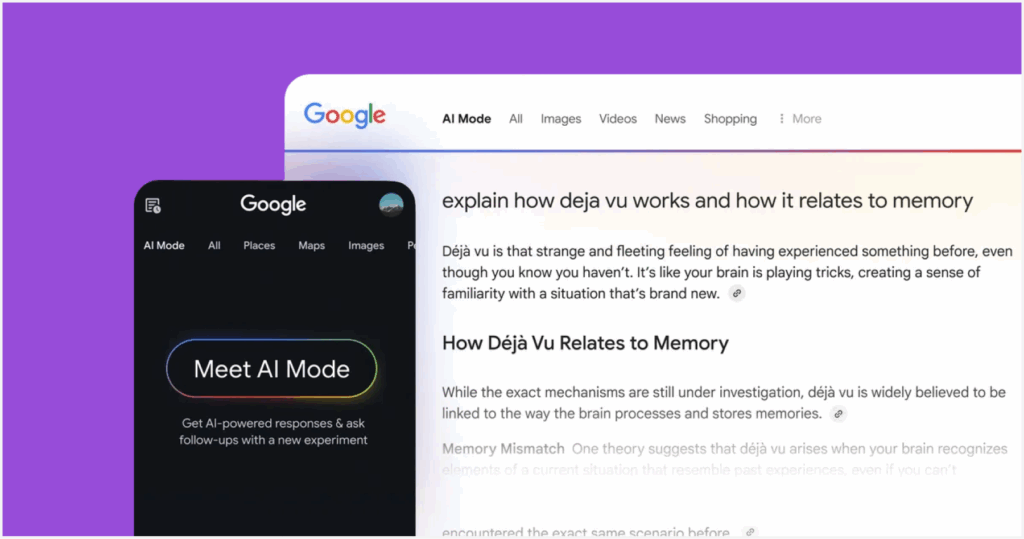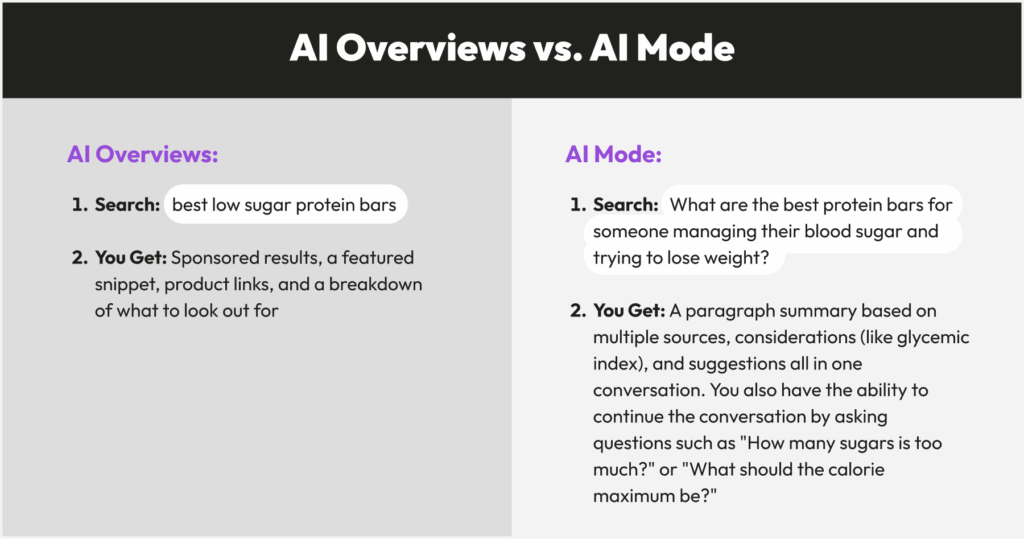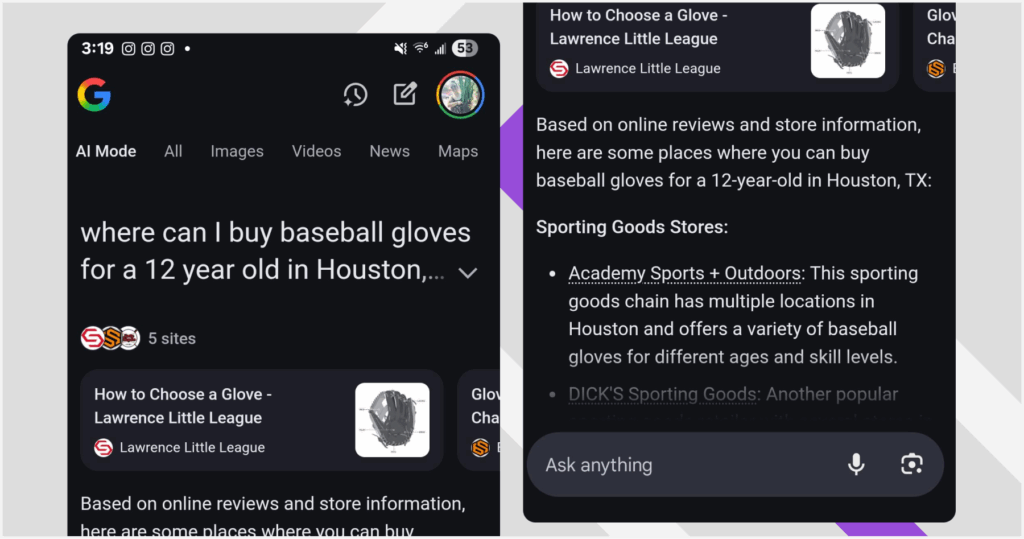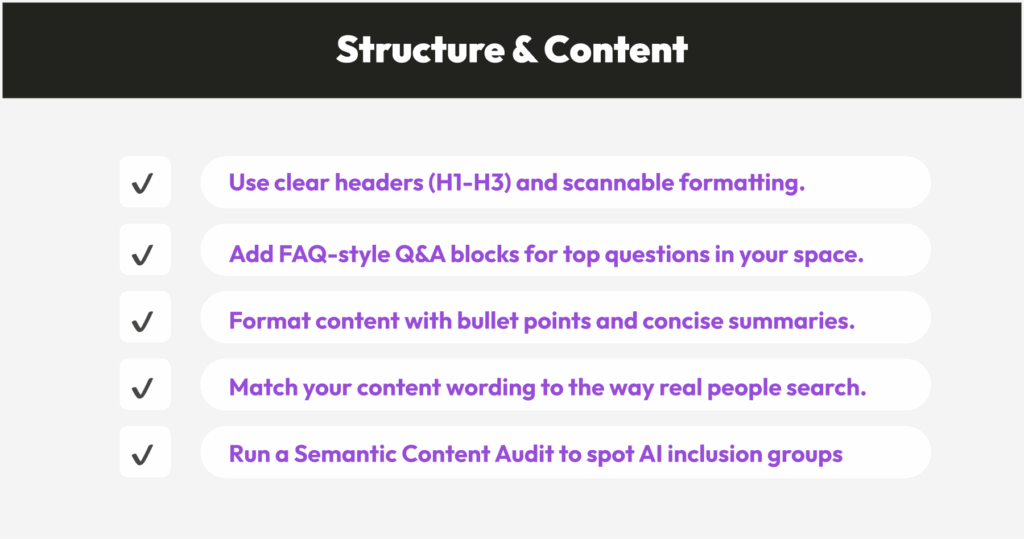
Google’s new AI Mode is officially live as of May 2025, and it’s changing search as we know it.
Instead of serving up blue links, AI Mode Google Search delivers instant, conversational answers powered by Gemini 2.5. Users can ask complex questions, follow up in real time, and get what they need—without ever clicking through.
That’s the point: AI Mode isn’t built for clicks. It’s built to answer.
“We are in a new phase of the AI platform shift where decades of research are becoming reality for people all over the world.” – CEO, Sundar Pichai
And it’s working: according to Adobe, 55% of consumers already use AI-driven search for product research, while 47% rely on it for recommendations. That behavior shift only accelerates with the launch of AI Mode, Google is changing how your audience searches and how they find (or don’t find) you.
If you’re a marketer, content creator, or SEO strategist, this isn’t something to passively observe. It’s time to rethink your strategy from the ground up.

Google’s AI Overviews were just the warm-up. When introduced, they offered quick summaries above traditional results. With AI Mode now in the mix, you might be asking yourself, “what’s even the difference between AI Overviews and AI Mode?” And the biggest answer is—conversation.
AI Overviews still led users to blue links. While the end goal might be the same, an answer, Google’s new AI Mode goes further by giving users the opportunity to go back and forth with the AI, turning it into more than a search.
AI Mode is essentially a Google AI-only search mode (and it may soon become the default). For now, it appears as a separate tab, but Google has already hinted this conversational approach is the future of search.
So why would someone use one over the other?

Luckily for marketers, optimizing for AI Overviews and Google’s AI Mode is essentially the same. Both rely on high-quality, well-structured content that can be easily understood, summarized, and trusted by Gemini. If your content is clear, comprehensive, and semantically rich, you’re setting yourself up to surface across both experiences.
Unlike traditional results, the Google Search AI Mode experience prioritizes synthesized answers over clickable links—changing what visibility really means.
Instead of ranking links based on traditional SEO signals alone, Google AI Mode uses a combination of search index data, real-time retrieval, and Gemini 2.5’s language processing to generate full answers. It breaks down complex queries into smaller sub-questions, then builds a synthesized response—often without showing the original sources upfront.
As an agency, we use our Similarity Score Extension, which analyzes how well a brands content matches the most common query variations and AI-rewritten phrasing. It helps pinpoint gaps where their pages fall short of being included in AI responses, so we can sugest strategic edits.
But overall, that means content isn’t just judged on keywords. It’s judged on clarity, depth, and whether it can be quoted by AI.
Here’s what the experience looks like for users:

You can track AI Mode traffic in Google Analytics, but be aware it was initially miscategorized as “direct” instead of “organic” due to a tracking issue. That issue has been resolved, so your reports should now reflect AI Mode traffic correctly. If you’re monitoring performance, it’s worth checking that your analytics setup is capturing this data accurately.
Zero-click searches are the new normal. Users scan the AI-generated summary, maybe follow up with another question, and move on. Google’s new AI Mode isn’t just pointing people to information—it’s becoming the destination.
AI Mode leans heavily on schema markup to understand what your content is about. Structured data helps Google interpret and synthesize your content—without having to guess.
If you’re not already using schema for things like:
…it’s time to start. It’s one of the easiest ways to help Gemini understand the who, what, and why behind your page.

Forget chasing one keyword per blog. AI Mode doesn’t just match terms—it breaks down topics, interprets sub-questions, and looks for full context. If your content doesn’t go deep, it doesn’t get pulled in.
To stay visible:
Think of your blog like a briefing doc for an AI—it should be skimmable, clear, and structured in a way that invites extraction.
With Google’s new AI Mode now live for all U.S. users, we’ve officially crossed into a new chapter of search. One where ranking first doesn’t matter if you’re not even in the conversation.
Gone are the days when stuffing a keyword and securing a blue link guaranteed visibility. AI Mode prioritizes content it can understand, summarize, and trust—not just content that ranks well. That means the spotlight now shines on clarity, structure, and true expertise.
But this shift isn’t a threat, it’s an opportunity.
Brands that embrace this change early will be the ones showing up, even when links disappear. So, what should you focus on?
Not sure how your brand is showing up in AI search, or if it’s showing up at all? Start with a free AI Performance Review to uncover how your content is performing in Google’s AI Mode and other conversational search experiences. If Google is having new conversations with your audience, we’ll make sure your brand is part of them.
